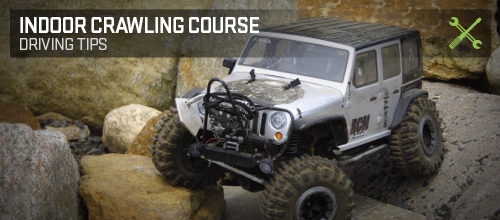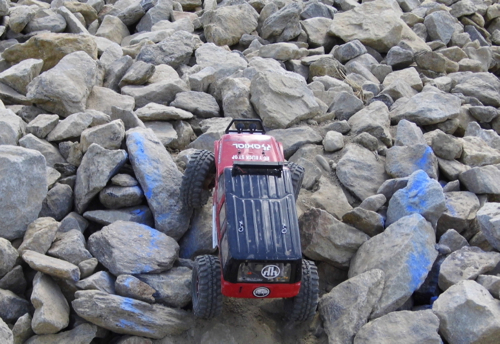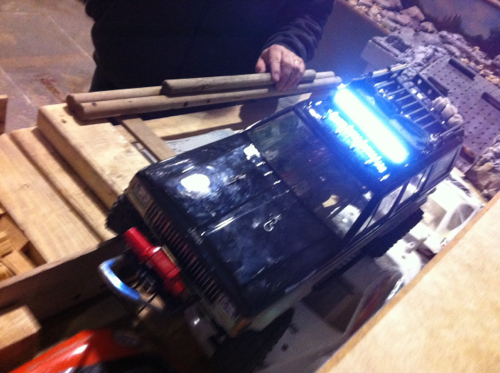Posted: 2/25/15

In many parts of the country, hobby stores have setup indoor crawling courses so that their customers can crawl year round. This is, of course, great, but crawling indoors can be radically different than outdoors. There are two basic types of indoor rock crawling courses. One is made out of actual rocks placed indoors. The second type is simulated rock. Both present different challenges.

The courses made out of rocks moved indoors are usually a large collection of many smaller rocks ranging from baseball-sized to rocks about the size of basketballs. Some courses may have some bigger rocks, but that's fairly rare, as the smaller the rocks are easier to get indoors. Piles of small rocks are very different than large exposed rocks found outdoors. The problem is all of the gaps and holes created between all of the rocks. When navigating these courses, the vehicle's tires are constantly dropping in these holes. This can be brutal on the vehicles. When tires fall in these holes and get bound up, the suspension and especially the drivetrain take a real beating. Extremely careful line selection is needed to avoid as many of these holes as possible. A suspension setup with less articulation--specifically droop or down travel--will also make a huge difference as the tires will be less likely to fall in holes. Less droop will make the tires more likely to glide over the gaps between rocks. You can fabricate function limiting straps out of items such as shoelaces or cable ties. You don't want to take away all of your suspension's functionality, but limiting droop will often considerably help on many indoor rock crawling courses.
Another type of indoor course is the manmade type that is often fabricated out of spray foam insulation that goes on as a sprayed foam and then expands and hardens. When painted, this can made for some very realistic terrain. The hardest part about adapting to this surface is coping with inconsistent traction, which is pretty common outdoors as well. The difference is outdoors you can see the difference in terrain. If you're paying attention, you know if you're on sand, rock, smooth rock, etc. and can change your driving style to suit. On these manmade foam courses, you often can't see how the surface is wearing. Sometimes you can see the paint or bed liner coating that is often used completely worn off, but often it looks the same but is completely smooth. Keep in mind too much traction can often hurt your efforts a lot more than too little traction. When traction is low, you slip and slide. That can be a struggle, but you can often just keep trying. When you unexpectedly encounter too much traction on a climb, your rear tires can bite in and flip you over backwards. The key is to keep a careful watch on not just the obstacles in your path but also the terrain's surface.

With both types of indoor courses one of the best things you can do is pre-walk the course. You don't need to actually walk on the course, but you should walk along the course and envision your planned line. In your head, picture your vehicle as it goes and predict where you find difficulty. Really examine the course for tire-grabbing holes and look for smooth and rough surfaces that could present problems.